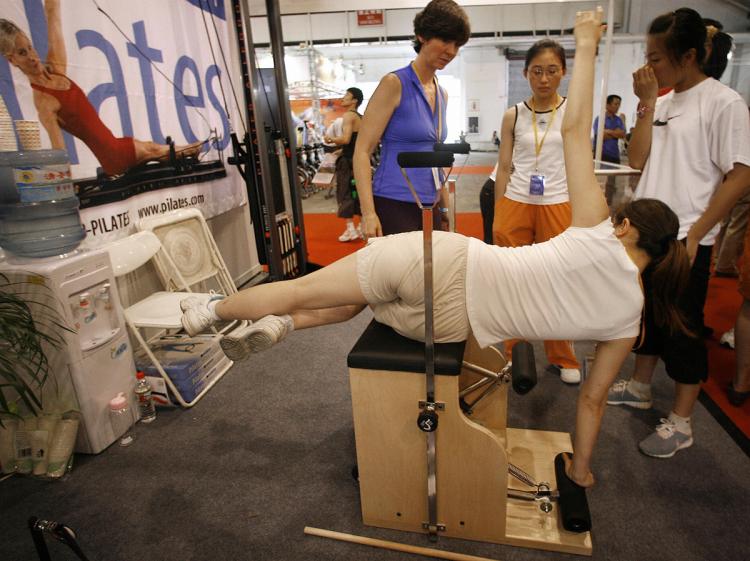Joseph Pilates taught his students to center themselves; to commit to each exercise with full attention by concentrating, and paying attention to what is going on throughout their bodies, from their toes to their head. His students learned to control their muscles throughout each exercise. These principles help people better understand how to approach exercise and understand their bodies in a more mindful and attentive manner.
Compiled are a series of principles that are commonly known as the “Pilates Principles.”
Breathing
The first exercise in the Pilates mat series is “the hundred.” It is called the hundred because it involves inhaling for five counts and exhaling for five counts. It also involves a special breathing technique where one draws the breath in primarily using their intercostals (resulting in an expanse and narrowing of the ribcage).
By regulating one’s breathing, it can help calm the mind. Pilates taught that deep breathing would help oxygenate the blood and remove waste from the body. A positive result of breath work is a relief from fatigue, stress, and lack of concentration.
Centering
Pilates taught people to move from their center. He coined it the “power house.” Today we often hear the term “core muscles,” which also refer to one’s center or the core of the body. When movement is initiated from the center (abdominals, back muscles, and muscles around the pelvis) it helps to provide more stability and power.
In order to effectively move from the center, one must know how to breathe properly, and how to control the muscles, thus leading us to the next principle, “control.”
Control
Not only must one know how to engage and control muscular activation and breath as they move, their movements must reflect this through precision and well-controlled movements.
One must also be able to control the balance between tension and relaxation.
Precision
Every movement that Pilates designed has a well thought out intention. Eventually the precision one applies to the movements will train them to be able to carry it out into their everyday life. Each person’s body is different, so how they approach a movement may be slightly varied based on their physicality, strengths, and limitations.
Flow
Although Pilates exercises are not designed to be performed with sentiment, as one would a dance, they are supposed to have a rhythm and a good quality flow. The movements should be well connected, and have solid transitions. This helps ensure the development of one’s strength as well as stamina.
Focus
In order to piece all of these principles together and apply them to movement, one must focus. There is no way a person can practice Pilates well while watching television, reading a book or magazine, or even getting lost in song.
In a way, focusing inward on breath, and on one’s center, while moving in a precisely controlled, and fluid manner becomes akin to mindfulness. It helps people deepen their connection to themselves, which often leads to a greater sense of well-being, both physically, and mentally, and perhaps even spiritually.








Friends Read Free